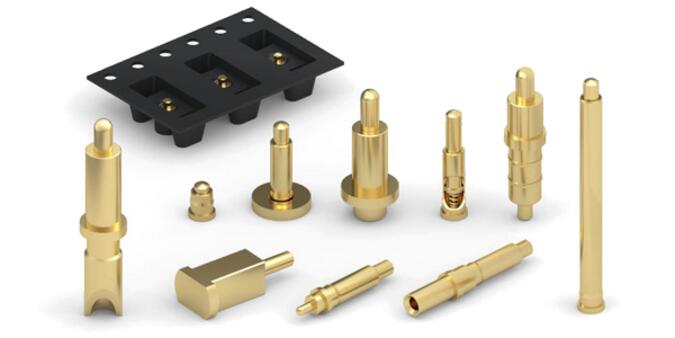Pogo Pin connectors use small, circular pins that connect two pieces of electronic equipment. They’re popular among portable electronics because they’re compact and easy to connect, but they have one big downside: they can easily become disconnected due to vibration or other movement.
Spring-Loaded Pin connectors use large, round pins that fit into matching holes in both pieces of equipment. When you press down on the connection between the pins, they create enough tension to keep them together. This makes Spring-Loaded Pin connectors much more durable than Pogo Pin connectors, especially in high- vibration environments.
If there is one connector that’s hard to understand, it would most likely be the Pogo Pin and Spring-Loaded Pin. But fear not, the article has all of the details that you need!
What is a Pogo Pin?
The pogo pin is a connector that uses spring-loaded pins to connect two or more pieces of electronic equipment. This connector has several advantages over other connectors, including the ability to connect devices with tight spaces and the ability to attach multiple devices at once.
In addition to needle clamps, they are mainly used to fasten paper and clothes. Brooches can be turned into accessories or used as necklaces, earrings and bracelets.
A needle is a type of needle commonly used to sew clothes. The needles used in sewing machines are more than those used to sew clothes by hand. The idea of the board is very simple. It consists of a common spring mechanism and a hook. The hook creates a loop and sticks to the object. Another purpose of the belt is to cover the tip of the pin and protect the wearer from sharp edges.
How Does a Spring Loaded Pin Work?
The pogo pin connector is a spring-loaded connector that was developed in the early 1970s. The pogo pin connector is a small, compact connector that can be inserted easily into a port on a circuit board. The pogo pin connectors uses small, spring-loaded pins that can move up and down along the connector’s shaft. This motion allows the pins to connect and disconnect easily from the circuit board.
The spring-loaded pin connector is less expensive than the traditional spring-loaded connector and it has several advantages over the traditional connector.
Spring Loaded Pins for Electronics
When it comes to connecting electronic components, there are two main types of connectors: the pogo pin and the spring loaded pin. Which one is better for your project depends on a few factors, such as the type of connector and the pins involved. Here’s a brief overview of each connector type and how they work.
Pogo Pin connectors use small, circular pins that connect two pieces of electronic equipment. They’re popular among portable electronics because they’re compact and easy to connect, but they have one big downside: they can easily become disconnected due to vibration or other movement.
Spring-Loaded Pin connectors use large, round pins that fit into matching holes in both pieces of equipment. When you press down on the connection between the pins, they create enough tension to keep them together. This makes Spring-Loaded Pin connectors much more durable than Pogo Pin connectors, especially in high- vibration environments.
There are several advantages to using Spring-Loaded Pin connectors over Pogo Pin connectors:
They’re more resistant to vibration and shock.
They’re easier to connect because there’s no need for tiny circular pins.
They’re more stable during operation because there’s less chance of them becoming disconnected.
Conclusion
When it comes to connectors, there are two main types that we encounter on a daily basis: the pogo pin and the spring-loaded pin. Both have their own advantages and disadvantages, so it’s important to know which one is right for your project. In this article, we will compare the two pins and discuss why you might want to choose one over the other.

